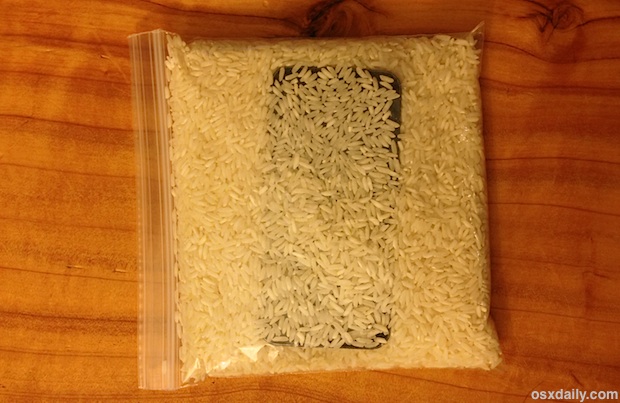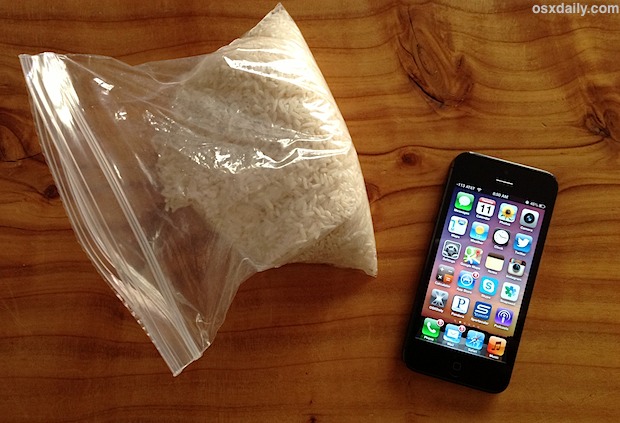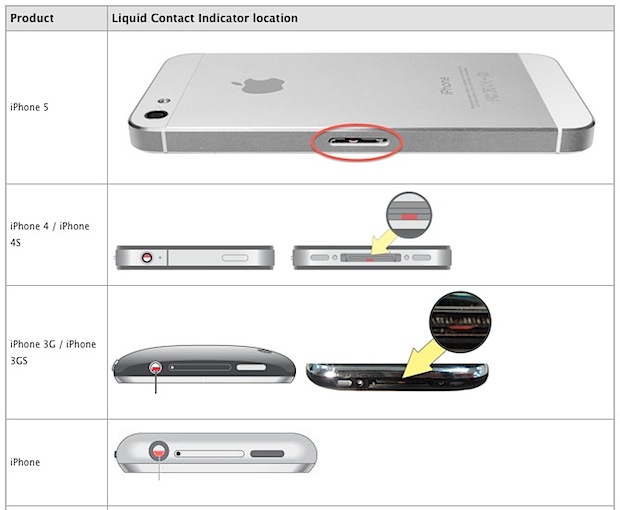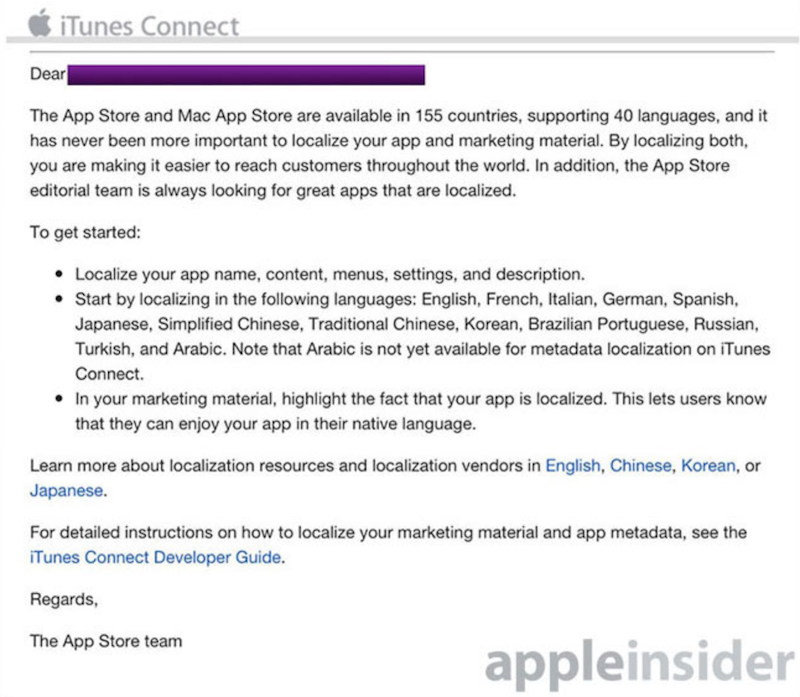Dunking a $650 electronic device into water is a pretty terrible feeling. The standard advice is to dry it off and stuff it into some rice, then cross your fingers and wait. But does that actually work? After accidentally dropping my iPhone for a swim into a pool of water where it was fully submerged, I had the unfortunate opportunity to test out the iPhone-in-a-rice-bag hypothesis, and I have good news; it actually works!

Here is exactly what I did, and what I learned from the process of saving an iPhone from extensive water exposure with the good old rice bag trick. The result is a completely functioning iPhone with zero water damage.
6 Things To-Do Immediately if iPhone has Water Contact
Want to save your iPhone? Drop everything and do this first, before putting it in rice:
- Remove from water as soon as humanly possible (obvious, right? But seriously, seconds can matter here so move quick)
- Turn the iPhone off immediately by holding down the power button until it shuts off
- Remove any case or enclosure right away since they can trap in moisture, screen protectors are fine to leave on unless there's an obvious water bubble
- Dry out the iPhone as best as you can using cloth (t-shirt, socks, whatever is readably available) or an absorbent material. Wipe down the screen, sides, and back. Pay special attention to the power button, volume buttons, mute switch, speakers and microphones, and the audio output jack, try and get all visible moisture soaked up
- Use a Q-Tip if possible to try and soak up extra water from the audio output jack and in small crevices. If you're out and about or have no q-tips handy, a little stick or sharp pencil poking through a t-shirt or cotton material can work too
- Disconnect any headphones, ports, chargers, USB cables, or accessories immediately
Now with all visible water removed, you're ready to stuff the iPhone into a rice bag.
Put the iPhone Into a Sealed Bag Full of Rice
Here are the basic requirements:
- A zip-lock bag or similar that is air tight
- Rice, any generic type, ideally not "enriched" (more on that in a second)
- Patience for at least 36 hours
Fill a zipper locked bag fairly full of rice so that the entire iPhone will be covered like in the picture below, then place the iPhone into the bag and seal it shut with some air in the bag.

Any type of rice works, but try to avoid enriched rice, the reason being that whatever enriches it leaves a lot of white residual powder in the bag and it will also get into the ports and buttons on the iPhone. Enriched rice does still work (it's actually what I learned), but knowing now that it leaves a lot of mystery white powder gunked up in places, I'll probably go buy a bag of normal rice for any potential future water-meets-iPhone encounters. The patience part is the hardest, and generally the longer you wait the better the likely outcome because you want all water inside the device to be completely absorbed by the rice before trying to power it on again. I left my iPhone in the air-tight rice bag for around 36 hours, but there's no harm in leaving it in for 48 hours. Any less may work but it also could be inadequate, so therefore longer is better.
Success! Saved from Water Damage
Once you've waited at least 36 hours, open the rice bag and check out the iPhone. If you suspect the iPhone has any residual moisture left in it at all, do not power it on. If all seems well, go ahead and turn it on as usual. If all goes well, it'll power on as usual, and your iPhone will have survived the water encounter!
Here's my iPhone turned on for the first time after a full submersion in water, it works beautifully just as normal, and is dry as can be:

This should work for almost every instance of severe water contact with an iPhone, though obviously for situations where an iPhone is soaking in water while turned on for 15 minutes or longer your likelihood of recovery is going to diminish dramatically. Likewise, you'll have much better recovery odds with fresh water than you would with salt water, simply because salt water is more corrosive. Soft drinks and sticky beverages will be more challenging as well since they leave more residue around, but as long as it dries out it will probably survive even if you dump a coke or coffee onto an iPhone.
Check the Water Damage / Liquid Contact Sensors
After the iPhone is dried out completely, check out the liquid contact indicators. Each iPhone is equipped with several water damage sensors that turn red if contact with any fluid is made, and if they are triggered than the likelihood of free repair service is fairly slim and your warranty may be toast. You can check these yourself by looking at the following locations, depending on your iPhone model (image via Apple):

Generally if the liquid sensors are triggered it's bad news, but the fine print in the water damage policy suggests that there is some leniency available, so if you're generally pleasant to deal with you may get lucky even if your iPhone spent an afternoon rolling around in ocean waves and now has some damage even after soaking in rice for a few days.
What if water damage occurred and something doesn't work?
If the iPhone has dried out, suffered water damage, and warranty service is fruitless, the four things most likely to go wrong are the following:
- The home button becomes unresponsive – try this trick first, but if it's completely unresponsive you can usually get by with the onscreen home button trick as a fix to deal with a broken home button
- Audio output is dead – no simple user alternative or repair, consider using a USB based dock if you want to listen to audio instead
- Volume buttons, mute buttons, and power button don't work – you can get by without having volume and mute buttons since both of those are available through software, the power button will be a problem though if it's unresponsive so don't let the iPhone run out of battery
- Diminished touch-screen response – depending on the severity this can be tolerable or terrible, sometimes replacing a screen helps, soemtimes it doesn't because the problem can be deeper than just damage to the liquid crystal display
If water damage has occurred, you can always try taking the iPhone into Apple to see if they'll swap it out or repair it for you for free, but without AppleCare+ the odds are fairly slim since the standard warranty does not cover water damage and accidental damage in general. That said, there are always exceptions, and sometimes the repair cost is reasonable anyway, so it's always worth a shot. The cost of repair is almost always cheaper than a new iPhone anyway, so unless you're ripe for a new subsidized contract it may be the best thing to do.
Got any other tips or tricks for saving an iPhone from water damage? Let us know in the comments!







 Brian White, Topeka Capital's Apple analyst that previously
Brian White, Topeka Capital's Apple analyst that previously 



